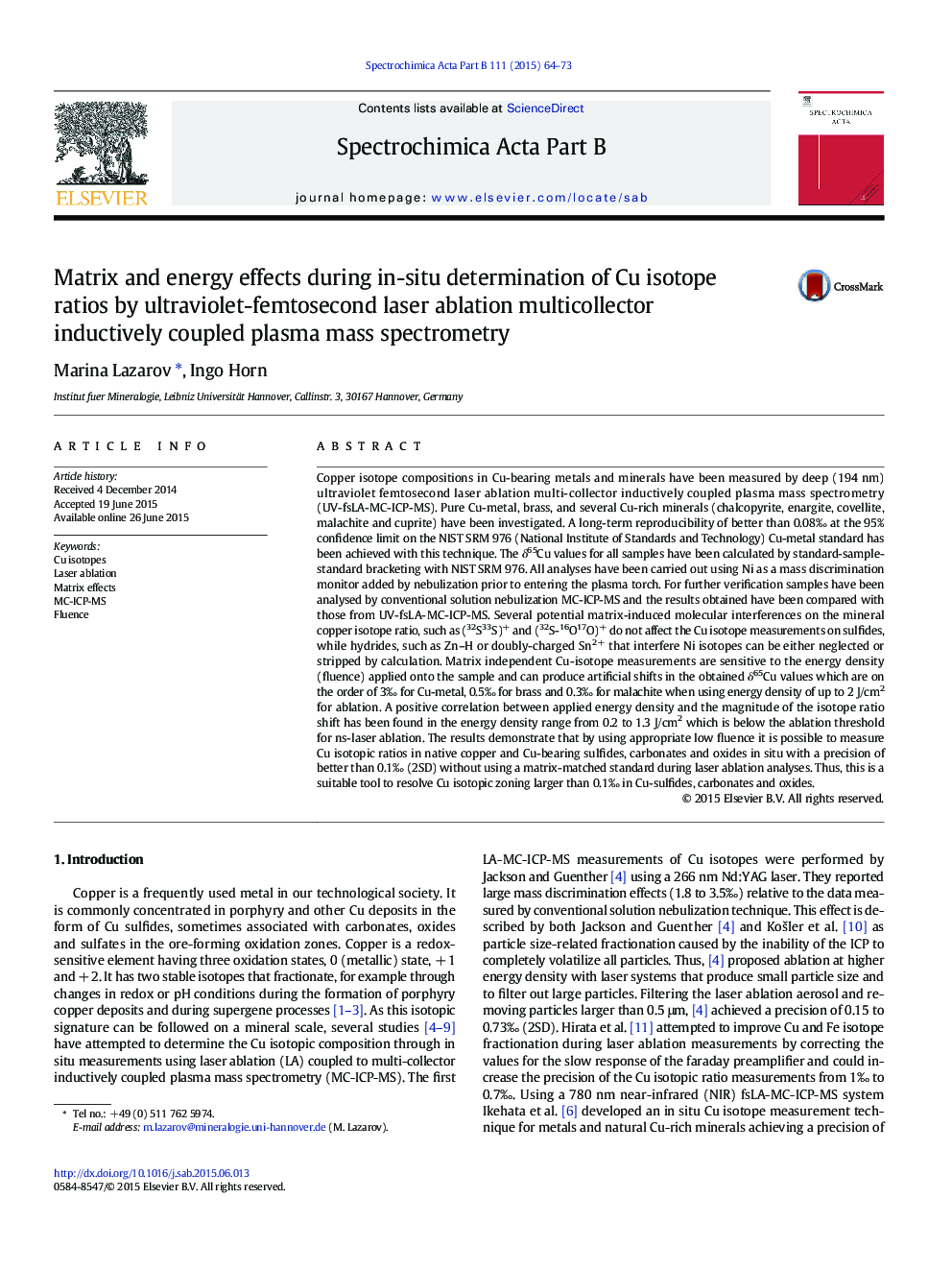| Article ID | Journal | Published Year | Pages | File Type |
|---|---|---|---|---|
| 7674215 | Spectrochimica Acta Part B: Atomic Spectroscopy | 2015 | 10 Pages |
Abstract
Copper isotope compositions in Cu-bearing metals and minerals have been measured by deep (194 nm) ultraviolet femtosecond laser ablation multi-collector inductively coupled plasma mass spectrometry (UV-fsLA-MC-ICP-MS). Pure Cu-metal, brass, and several Cu-rich minerals (chalcopyrite, enargite, covellite, malachite and cuprite) have been investigated. A long-term reproducibility of better than 0.08Ⱐat the 95% confidence limit on the NIST SRM 976 (National Institute of Standards and Technology) Cu-metal standard has been achieved with this technique. The δ65Cu values for all samples have been calculated by standard-sample-standard bracketing with NIST SRM 976. All analyses have been carried out using Ni as a mass discrimination monitor added by nebulization prior to entering the plasma torch. For further verification samples have been analysed by conventional solution nebulization MC-ICP-MS and the results obtained have been compared with those from UV-fsLA-MC-ICP-MS. Several potential matrix-induced molecular interferences on the mineral copper isotope ratio, such as (32S33S)+ and (32S-16O17O)+ do not affect the Cu isotope measurements on sulfides, while hydrides, such as Zn-H or doubly-charged Sn2 + that interfere Ni isotopes can be either neglected or stripped by calculation. Matrix independent Cu-isotope measurements are sensitive to the energy density (fluence) applied onto the sample and can produce artificial shifts in the obtained δ65Cu values which are on the order of 3Ⱐfor Cu-metal, 0.5Ⱐfor brass and 0.3Ⱐfor malachite when using energy density of up to 2 J/cm2 for ablation. A positive correlation between applied energy density and the magnitude of the isotope ratio shift has been found in the energy density range from 0.2 to 1.3 J/cm2 which is below the ablation threshold for ns-laser ablation. The results demonstrate that by using appropriate low fluence it is possible to measure Cu isotopic ratios in native copper and Cu-bearing sulfides, carbonates and oxides in situ with a precision of better than 0.1Ⱐ(2SD) without using a matrix-matched standard during laser ablation analyses. Thus, this is a suitable tool to resolve Cu isotopic zoning larger than 0.1Ⱐin Cu-sulfides, carbonates and oxides.
Related Topics
Physical Sciences and Engineering
Chemistry
Analytical Chemistry
Authors
Marina Lazarov, Ingo Horn,
